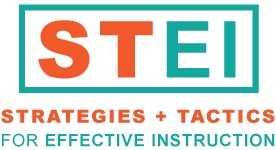Teaching is systematic presentation of content assumed necessary for mastery of subject matter being taught. Good teaching does not just happen. It involves careful planning to decide what and how to teach, and how to communicate realistic expectations. It involves effective managing of classroom interactions to reduce disruptions and increase time students are productively engaged. It involves delivering lessons that introduce and extend levels of under standing of specific content. Delivering instruction is the third component of effective teaching.
Delivering instruction involves presenting information and keeping track of the extent to which the content represented by it is understood or acted upon by students. This means that effective teachers make decisions about how to present information as well as how to monitor and adjust their presentations to accommodate individual differences and enhance the learning of all their students. There are three principles of delivering instruction:
- Present information
- Monitor presentations
- Adjust presentations
Present information involves making decisions about how to present content, how to teach thinking skills, how to motivate students during content presentations, and how to provide relevant practice. When presenting content, effective teachers gain their students’ attention, review previously covered material, provide organized lessons, introduce new material by relating it to known content whenever possible, and interact positively with their students. When teaching thinking skills, effective teachers model ways to solve problems and present alternative ways of finding answers as they deliver instructional presentations. When motivating students, effective teachers focus on using intrinsic (i.e., internal sources of satisfaction) as well as extrinsic (i.e., external sources of satisfaction) rewards with enthusiasm and interest. When providing relevant practice, effective teachers help students develop automatic responses, vary opportunities for practices, and provide ample time and relevant, varied activities for guided and independent practice. The goal in presenting information is to teach students something they do not know.
Monitor presentations involves making decisions about how to provide feedback and how to keep students actively involved when delivering instruction. When providing feedback, effective teachers provide immediate, frequent, explicit information that sup ports correct responses and provides models for improvement of incorrect responses. When keeping students actively involved, effective teachers regularly monitor responses during instructional presentations, use peers to enhance engagement, and provide ample, varied opportunities for supporting success and correcting failure. The goal in monitoring presentations is to ensure that students are learning the con tent as it was presented.
Adjust presentations involves making decisions about how to change instruction by modifying lessons, by using alternative instructional options, and by using differing levels of pace to meet the individual needs of students. Effective teachers teach skills until their students master them, and they use information gathered during instructional presentations and practice sessions to decide when and how to modify their teaching so that all students can be successful. The goal in adjusting presentations is to make any changes needed to ensure that all students benefit from instruction.
The main content of this course is a set of tactics that illustrate specific ways to actively address each principle and strategy when providing effective instruction.
| Component | Principle | Strategy |
|---|---|---|
| Delivering | 1. Present Information |
|
|
||
|
||
|
||
| 2. Monitor Presentations |
|
|
|
||
| 3. Adjust Presentations |
|
Present Information
Effective teachers do not make assumptions about what their students know and do not know. They check before presenting content that builds on prior knowledge.
Clear directions, useful examples, and appropriate practice help students make connections and support learning.
Effective teachers know the importance of interest and enthusiasm in building positive and trusting relationships with students.
Effective teachers know that some students need more incentives than others to actively participate and complete assigned work.
Effective teachers value and use similarities and differences in what motivates their students.
Effective teachers know the value of modeling when teaching any skills.
Effective teachers know that how to gather information is a skill that should be taught like any other.
Effective teachers show students how to think differently by expanding their views, challenging their extant knowledge, and deviating from the ordinary.
Effective teachers use a variety of approaches to help students remember key concepts and other information in their lessons.
Effective teachers provide opportunities for students to practice fast and fluent skill performances.
Effective teachers vary how students practice content and skills they are learning.
Few students enjoy “practice” and effective teachers vary the content and types of independent activities to account for it.
Keeping track of assignments helps in deciding what to teach as well as in keeping track of student progress.
Monitor Presentations
Effective teachers provide clear and specific praise.
Effective instruction begins with a demonstration, illustration, or example of expected behavior.
Effective instruction begins with a demonstration, illustration, or example of expected behavior.
Effective teachers monitor student performance to look for opportunities to provide corrective and supportive feedback.
Effective teachers pay attention to how their students are doing to keep track of the need for changing or redirecting a lesson.
Effective teachers monitor independent assignment and activities to prevent students from practicing errors.
Effective teachers find ways for students to help each other.
Effective teachers provide presentations so that students experience success and have opportunities to demonstrate content mastery.
Effective teachers take advantage of students’ mistakes and use them as opportunities for feedback and redirection.
Effective teachers keep track and modify their instruction to include students who are not engaged.
Adjust Presentations
Effective teachers use different approaches and activities to keep students involved.
Effective teachers actively adjust the pace of their presentations to maximize opportunities for success for all students.
